
We Didn’t Recognize the Danger, 15 x 12 x 16 inches, wire, metal frame, wool, rigid foam, felt, cloth tape, reed, ©2023 Eve Jacobs-Carnahan
Combining Metal Work with Fiber Art in Unexpected Ways
Refusing to conform to stereotypes
To me, being a feminist teenager in the 1970’s meant not conforming to gender stereotypes. While I loved knitting and other textile-based crafts (and still do), I rebelled against the assumption that girls would take home economics (sewing, cooking) and boys would take woodshop and mechanics classes in school. So, in my senior year of high school, I elected to take small engine tech.
This took a bit of daring. I was an honors student, filling my course load with the most difficult academic classes available. In four years of high school, I hadn’t even ventured into the wing of the building where the shop was located. Small engine tech was outside my wheelhouse in more ways than one.
Unsurprisingly, I was the only girl in the class. I hardly knew the other students. Most were future car mechanics. There was one guy I knew from my other classes, and from the fact that he was the star of the track team.
This was a hands-on class. The goal was to learn how a small engine works; our project was to take apart and re-assemble a gas-powered lawn mower.
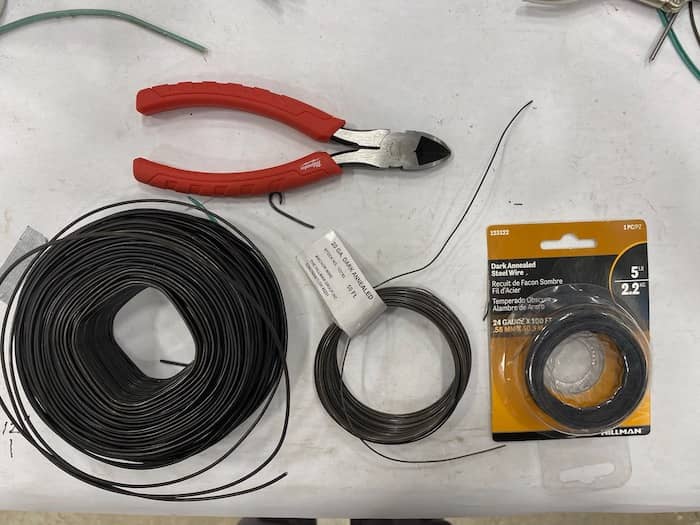
Supplies on my workbench in a January workshop at North Country Studio Workshops, Bennington VT.
We worked in pairs, and my partner was the track star. While I knew all the answers on the quizzes as to the parts of the engine and the calculations of the fuel-oxygen ratio for combustion, it was an open question whether I would be able to put together an engine. I think the whole class, even the teacher, was mildly surprised when my partner and I succeeded. There was outright astonishment when we pulled the cord and the engine actually started!
Taking a workshop on wire and sheet metal to expand my art skills
I thought back to this class when I signed up for a sculpture workshop on wire and sheet metal fabrication this past January. Unlike my high school shop class, the workshop leader was a woman sculptor and all the students, except one, were women.
I’m always eager to learn more ways to make three-dimensional shapes and armatures. I like repurposing found objects so as not to be wasteful of materials and to add layers of meaning to my sculptures. To accomplish this, I have to know how to adapt and attach disparate objects to each other.
Pam Brown, the sculptor who led the workshop, demonstrated some easy methods to join pieces of metal. Oddly enough, some of these are really textile techniques executed with wire. Think of punching holes in metal with an awl, threading it with wire and twisting in place.
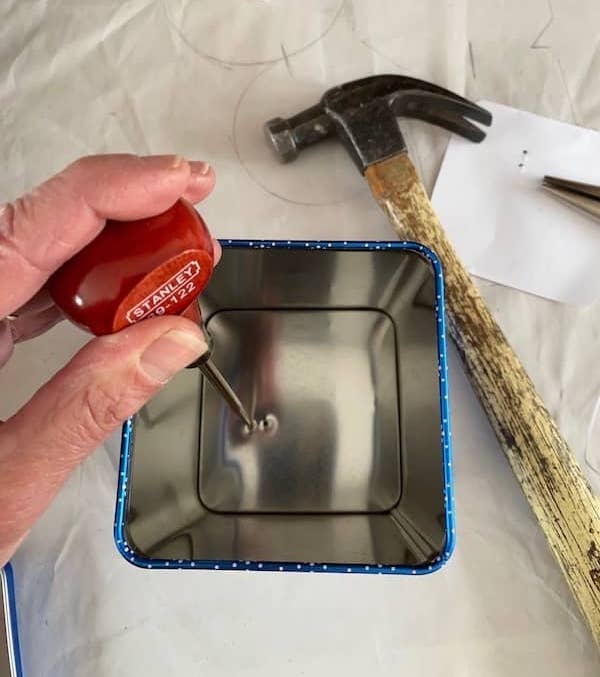
The workshop gave me the chance to try out several types of wire and some new tools. After the workshop I explored the local hardware and tool supply stores, looking for steel wire. I quickly put these new skills into practice. I joined metal tins with wire and secured them to the underside of a metal tray in my sculpture Lobby Disturbance. Drawing on my workshop experience, I fashioned a metal wedge to help position the tray on an angle. The hidden wedge solved a lot of problems constructing the base of the sculpture.
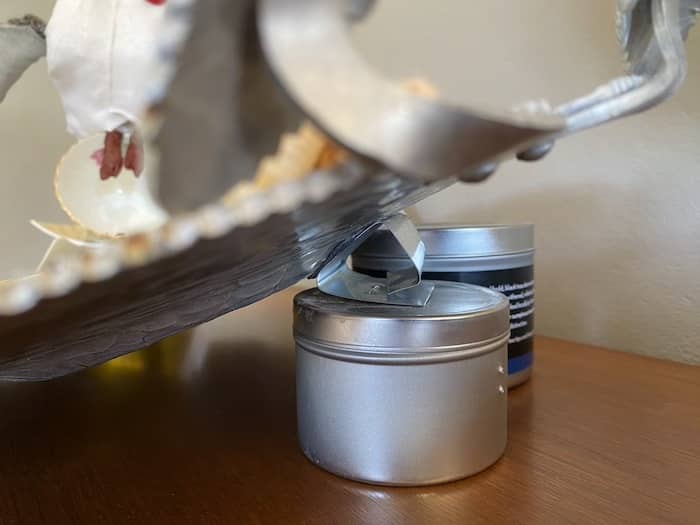
Lobby Disturbance (detail) showing hidden wedge to position sculptural elements. See the full sculpture here.
Combining fiber art and metal work in unexpected ways
I am currently working on a series of sculptures integrating bent wire shapes into the framework of the piece. The structures call to mind bird cages and decorative iron fences. I experimented with several gauges of annealed steel wire in the workshop, so I knew how they would respond to bending. I’m gaining some control over the material as I learn to shape it to fit my design.
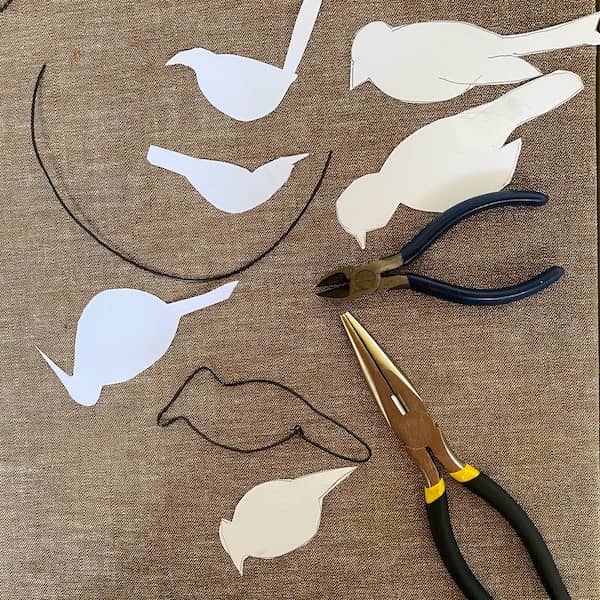
I am enjoying the effect of juxtaposing hard metal lines with soft fluffy knitted birds. Perhaps that contrast is my teenaged self reasserting itself and rebelling against stereotypes. Fiber artists need not restrict themselves to yarn and fabric.

We Didn’t Recognize the Danger, 15 x 12 x 16 inches, wire, metal frame, wool, rigid foam, felt, cloth tape, reed. ©2023 Eve Jacobs-Carnahan.
Combining elements of hard and soft adds complexity to the sculpture. It is an unexpected combination that fills out the picture.
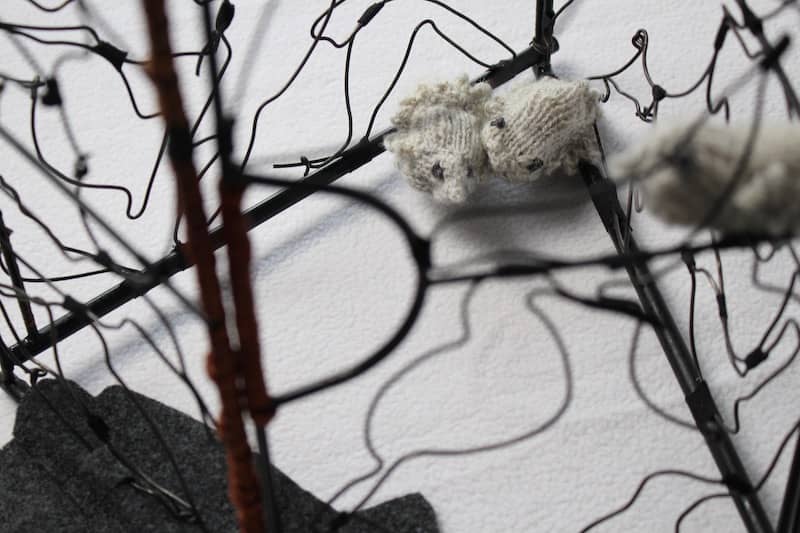
We Didn’t Recognize the Danger (detail) ©2023 Eve Jacobs-Carnahan.
0 Comments